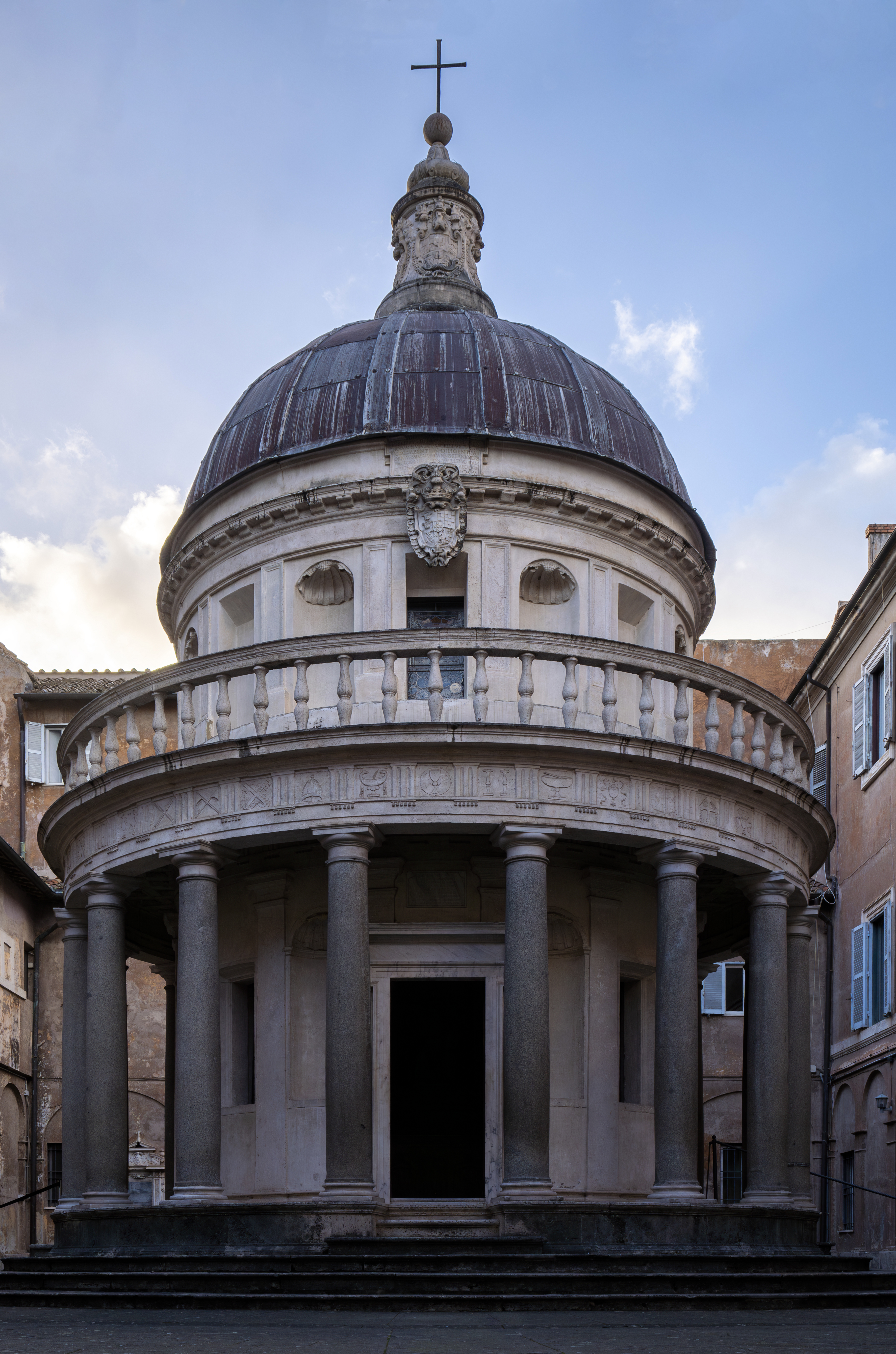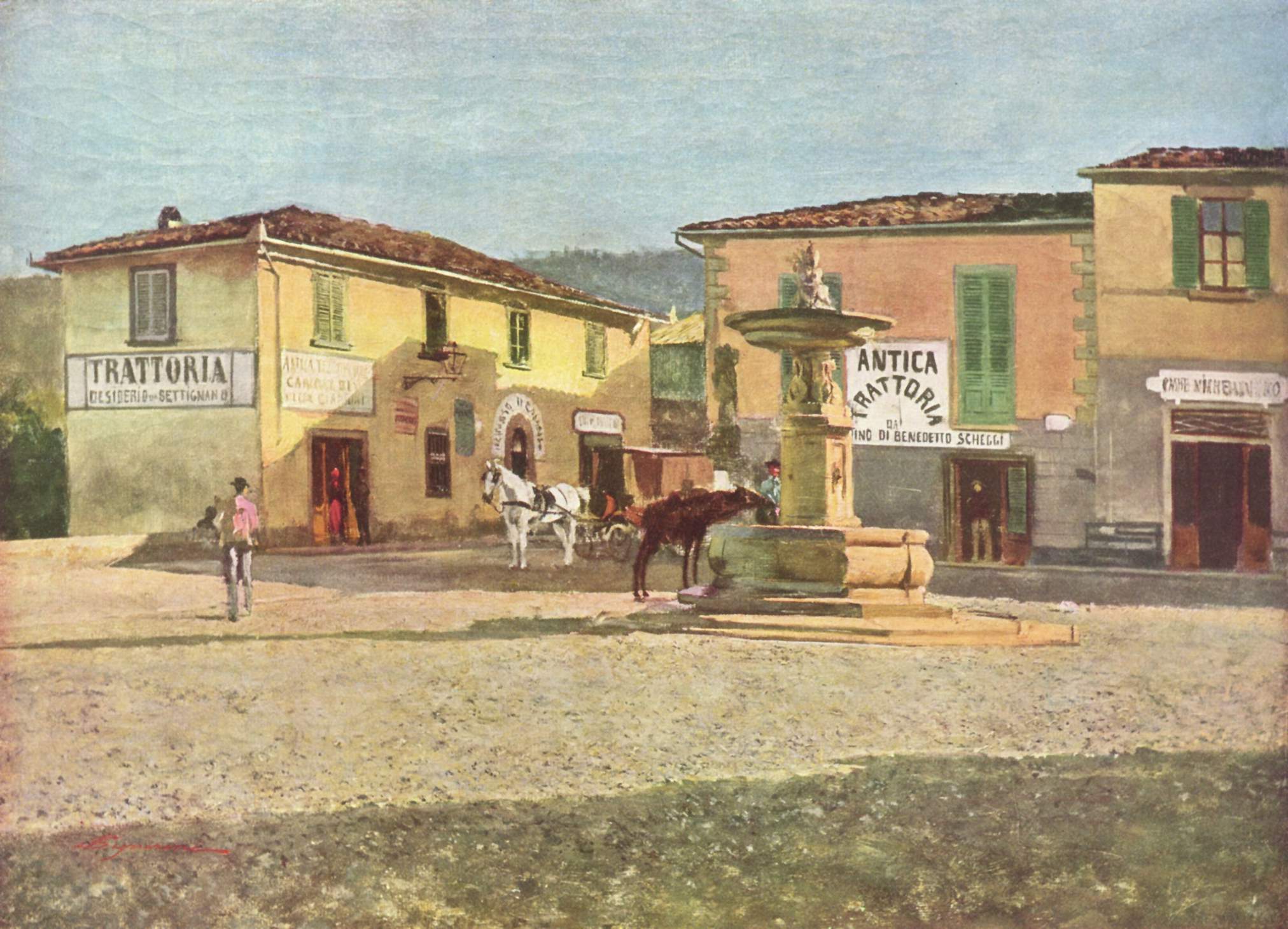|
1434 In Architecture
{{Architecture-hist-stub ...
__TOC__ Buildings and structures Buildings * Tangermünde ''Rathaus'' built. * 1431 – Collegiate Church of St Peter & St Paul, Lingfield, Surrey, England, rebuilt. * c. 1435 – Hoshang Shah tomb, Mandav, construction begins. * 1436: August 30 – Brunelleschi's Dome at Florence Cathedral dedicated. * 1439 – Strasbourg Cathedral completed. Births * c. 1430 – Luca Fancelli born in Settignano, near Florence (died c. 1494) * c. 1433 – Fra Giovanni Giocondo born in Verona (d. 1515) * 1439 – Francesco di Giorgio born in Siena (died 1502) Deaths * c. 1439 – Richard Winchcombe, English master mason References * Architecture Architecture is the art and technique of designing and building, as distinguished from the skills associated with construction. It is both the process and the product of sketching, conceiving, planning, designing, and constructing building ... [...More Info...] [...Related Items...] OR: [Wikipedia] [Google] [Baidu] |
Luca Fancelli
Luca Fancelli (c. 1430 – c. 1502) was an Italian architect and sculptor. Biography Fancelli was born in Settignano, a fraction of Florence. Much of his life and work is an enigma; what is known for sure is that he trained as a stonecutter and mason and studied under Brunelleschi. Giorgio Vasari, the 16th-century Florentine artist and biographer of the artists, is responsible for many doubts pertaining to the authenticity of works attributed to Fancelli. While Fancelli likely designed the Palazzo Pitti, the Florentine residence of the Medici's friend, and supposed rival, Luca Pitti; Vasari attributes the design to Brunelleschi, who had died several years before work began. The palazzo is not in Brunelleschi's style, and considered by many to be by a lesser hand. Fancelli has also been credited also with the design of the tribune of SS. Annunziata in Florence, but this too is disputed. In 1450 Fancelli moved to Mantua, where he was employed in the court of Marquis Ludov ... [...More Info...] [...Related Items...] OR: [Wikipedia] [Google] [Baidu] |
1502 In Architecture
__TOC__ Buildings and structures Buildings * c. 1500 – Chateau de Blois largely rebuilt. * 1500 – St. Anne's Church, Vilnius is completed. * 1501 ** Expansion of Holyrood Palace, Edinburgh. ** Chichester Cross is built in Chichester, England. ** Construction of the Jerónimos Monastery at Belém (Lisbon) in Portugal begins; it will take 100 years to complete. ** Construction of spire of St James' Church, Louth, Lincolnshire, England begins; it will take until c.1515 to complete. * 1501/2 – Construction of the Ducal Palace of Vila Viçosa in the Duchy of Braganza (Portugal) begins. * 1502 ** Tempietto, San Pietro in Montorio, Rome, designed by Donato Bramante, is built. ** Construction of St. Mary's Church, Gdańsk, begun in 1379 by Heinrich Ungeradin, is completed with the installation of vaulting by Heinrich Haetzl. ** Vladislav Hall in Prague Castle, designed by Benedikt Rejt, is completed. ** Expansion of Great Malvern Priory in England is completed. * 1503 – All Sai ... [...More Info...] [...Related Items...] OR: [Wikipedia] [Google] [Baidu] |
Siena
Siena ( , ; lat, Sena Iulia) is a city in Tuscany, Italy. It is the capital of the province of Siena. The city is historically linked to commercial and banking activities, having been a major banking center until the 13th and 14th centuries. Siena is also home to the oldest bank in the world, the Monte dei Paschi bank, which has been operating continuously since 1472. Several significant Renaissance painters worked and were born in Siena, among them Duccio, Ambrogio Lorenzetti, Simone Martini and Sassetta, and influenced the course of Italian and European art. The University of Siena, originally called ''Studium Senese'', was founded in 1240, making it one of the oldest universities in continuous operation in the world. Siena was one of the most important cities in medieval Europe, and its historic centre is a UNESCO World Heritage Site. From January until the end of September of 2021 it had about 217,000 arrivals, with the largest numbers of foreign visitors coming ... [...More Info...] [...Related Items...] OR: [Wikipedia] [Google] [Baidu] |
Francesco Di Giorgio
Francesco di Giorgio Martini (1439–1501) was an Italian architect, engineer, painter, sculptor, and writer. As a painter, he belonged to the Sienese School. He was considered a visionary architectural theorist—in Nikolaus Pevsner's terms: "one of the most interesting later Quattrocento architects". As a military engineer, he executed architectural designs and sculptural projects and built almost seventy fortifications for the Federico da Montefeltro, Count (later Duke) of Urbino, building city walls and early examples of star-shaped fortifications. Born in Siena, he apprenticed as a painter with Vecchietta. In panels painted for '' cassoni'' he departed from the traditional representations of joyful wedding processions in frieze-like formulas to express visions of ideal, symmetrical, vast and all but empty urban spaces rendered in perspective. He composed an architectural treatis''Trattato di architettura, ingegneria e arte militare'' the third of the Quattrocento, ... [...More Info...] [...Related Items...] OR: [Wikipedia] [Google] [Baidu] |
1515 In Architecture
__TOC__ Events * 1511 – Dome of Seville Cathedral collapses. * 1512: March 5: West tower of Pieterskerk, Leiden, collapses. Buildings and structures Buildings * 1510–1520 – Tower ("Stump") of St Botolph's Church, Boston, England, completed. * 1510 ** Alcázar de Colón ("Columbus' Palace") in Santo Domingo, the 22-room home of Don Diego Columbus. ** Sheffield Manor in Yorkshire, England. * 1511 – All Saints' Church, Wittenberg (''Schloßkirche'') completed to a design by Conrad Pflüger. * 1513 – Work on New Cathedral, Salamanca, begun. * 1514 – St Mark's Campanile in Venice completed in final form. * 1515 – Cardinal Wolsey begins rebuilding Hampton Court Palace on the River Thames near London. * 1515–1518 – Ancienne Douane (Haguenau) built. * About 1515 – In England ** King's College Chapel, Cambridge completed by John Wastell. ** Spire of St James' Church, Louth, Lincolnshire completed. * 1517 – Shisha Gumbad ... [...More Info...] [...Related Items...] OR: [Wikipedia] [Google] [Baidu] |
Verona
Verona ( , ; vec, Verona or ) is a city on the Adige River in Veneto, Northern Italy, Italy, with 258,031 inhabitants. It is one of the seven provincial capitals of the region. It is the largest city Comune, municipality in the region and the second largest in northeastern Italy. The metropolitan area of Verona covers an area of and has a population of 714,310 inhabitants. It is one of the main tourist destinations in northern Italy because of its artistic heritage and several annual fairs and shows as well as the Opera, opera season in the Verona Arena, Arena, an ancient Ancient Rome, Roman Amphitheatre, amphitheater. Between the 13th and 14th century the city was ruled by the Scaliger, della Scala Family. Under the rule of the family, in particular of Cangrande I della Scala, the city experienced great prosperity, becoming rich and powerful and being surrounded by new walls. The Della Scala era is survived in numerous monuments around Verona. Two of William Shakespeare's ... [...More Info...] [...Related Items...] OR: [Wikipedia] [Google] [Baidu] |
Giovanni Giocondo
Giovanni Giocondo, Order of Friars Minor, (c. 1433 – 1515) was an Italian friar, architect, antiquary, archaeologist, and classical scholar. Biography Giovanni Giocondo was born in Verona around 1433. He joined the Dominican Order at the age of eighteen. Afterwards, however, he left the Dominicans and entered the Franciscan Order. Giocondo began his career as a teacher of Latin and Greek in Verona, where Julius Caesar Scaliger was one of his pupils. As a young priest, Friar Giovanni was a learned archaeologist and a superb draughtsman. He visited Rome, sketched its ancient buildings, wrote the story of its great monuments, and recorded, deciphered and explained many defaced inscriptions. He stimulated the revival of classical learning by making transcriptions of ancient manuscripts, one of which, completed in 1492, he presented to Lorenzo de' Medici. Giocondo soon returned to his native town where he built bridges and planned fortifications for Treviso, acting as archit ... [...More Info...] [...Related Items...] OR: [Wikipedia] [Google] [Baidu] |
1494 In Architecture
__TOC__ Buildings and structures Buildings * St Edmund's Church, Southwold in England is completed. * Church of St. Valentin, Kiedrich in Hesse (Germany) is completed. * 1490 ** Bara Gumbad in Delhi is built. ** Probable completion of rebuilding of Sherborne Abbey choir, England, with a Perpendicular style fan vault by William Smyth. ** All Saints' Church, Wittenberg (''Schloßkirche''), designed by Conrad Pflüger, begun. ** Former Nea Ekklesia church in Constantinople destroyed by a lightning strike. * 1493 – Tomb of Bibi Jawindi at Uch in the Punjab region is built. * 1495 – Monastery of Jesus of Setúbal in Portugal, designed by Diogo de Boitaca, is completed. * 1497 – Rebuilding of Holy Trinity Church, Long Melford in England is completed. * 1497 – Santa Maria delle Grazie in Milan, Italy is completed. * 1498 – Church of St Martin, Landshut, Bavaria (Germany) is completed by Hans von Burghausen. * 1499 ** Garden loggia and external spiral staircase at Palazzo C ... [...More Info...] [...Related Items...] OR: [Wikipedia] [Google] [Baidu] |
Florence
Florence ( ; it, Firenze ) is a city in Central Italy and the capital city of the Tuscany region. It is the most populated city in Tuscany, with 383,083 inhabitants in 2016, and over 1,520,000 in its metropolitan area.Bilancio demografico anno 2013, datISTAT/ref> Florence was a centre of medieval European trade and finance and one of the wealthiest cities of that era. It is considered by many academics to have been the birthplace of the Renaissance, becoming a major artistic, cultural, commercial, political, economic and financial center. During this time, Florence rose to a position of enormous influence in Italy, Europe, and beyond. Its turbulent political history includes periods of rule by the powerful Medici family and numerous religious and republican revolutions. From 1865 to 1871 the city served as the capital of the Kingdom of Italy (established in 1861). The Florentine dialect forms the base of Standard Italian and it became the language of culture throughout Ital ... [...More Info...] [...Related Items...] OR: [Wikipedia] [Google] [Baidu] |
Settignano
Settignano is a ''frazione'' on a hillside northeast of Florence, Italy. The little '' borgo'' of Settignano carries a familiar name for having produced three sculptors of the Florentine Renaissance, Desiderio da Settignano and the Gamberini brothers, better known as Bernardo Rossellino and Antonio Rossellino. The young Michelangelo lived with a sculptor and his wife in Settignano—in a farmhouse that is now the "Villa Michelangelo"— where his father owned a marble quarry. In 1511 another sculptor was born there, Bartolomeo Ammannati. The marble quarries of Settignano produced this series of sculptors. Roman remains are to be found in the ''borgo'' which some have claimed was named after ''Settimio'' or Septimius Severus—in whose honor a statue was erected in the oldest square in the 16th century, destroyed in 1944— though habitation here long preceded the Roman emperor. The name may be a corruption from the term ''Fundus Septimianus''. [...More Info...] [...Related Items...] OR: [Wikipedia] [Google] [Baidu] |
Strasbourg Cathedral
Strasbourg Cathedral or the Cathedral of Our Lady of Strasbourg (french: Cathédrale Notre-Dame de Strasbourg, or ''Cathédrale de Strasbourg'', german: Liebfrauenmünster zu Straßburg or ''Straßburger Münster''), also known as Strasbourg Minster, is a Catholic cathedral in Strasbourg, Alsace, France. Although considerable parts of it are still in Romanesque architecture, it is widely consideredSusan Bernstein''Goethe's Architectonic Bildung and Buildings in Classical Weimar'' The Johns Hopkins University Press to be among the finest examples of Rayonnant Gothic architecture. Architect Erwin von Steinbach is credited for major contributions from 1277 to his death in 1318, and beyond through his son Johannes von Steinbach, and his grandson Gerlach von Steinbach, who succeeded him as chief architects. The Steinbachs's plans for the completion of the cathedral were not followed through by the chief architects who took over after them, and instead of the originally envisioned t ... [...More Info...] [...Related Items...] OR: [Wikipedia] [Google] [Baidu] |









